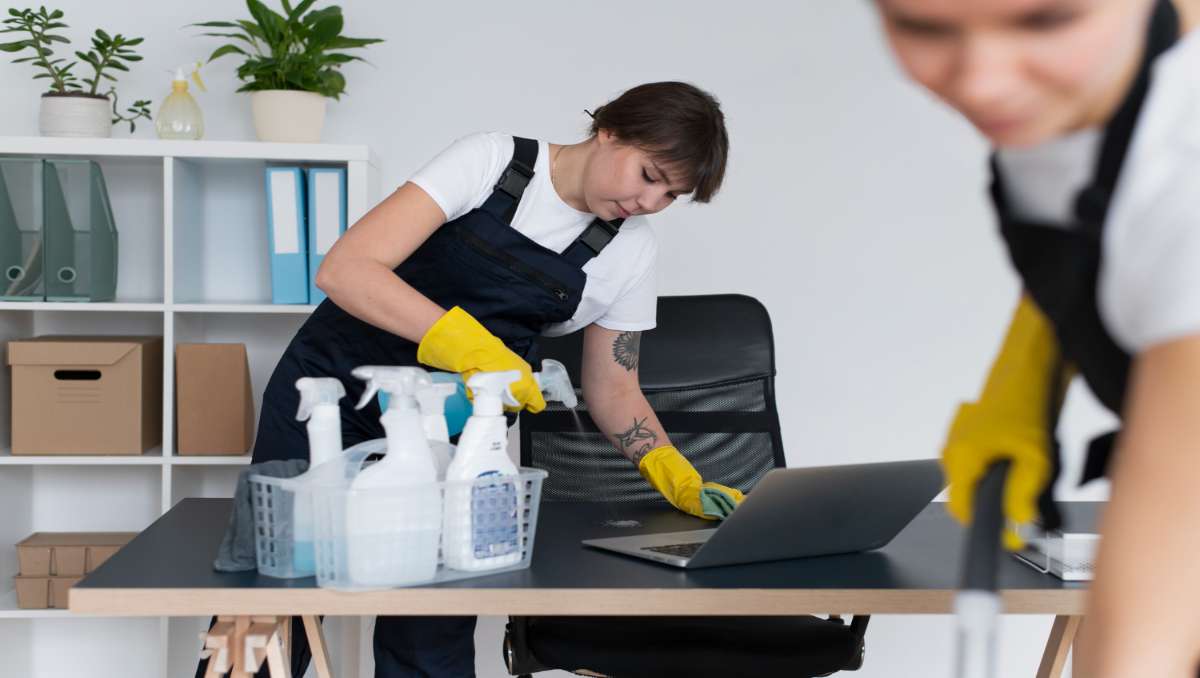Mesh chairs are a favorite in many homes and offices for good reason—they’re breathable, modern, and surprisingly comfortable. But over time, they can quietly collect dust, sweat, crumbs, and all sorts of everyday grime. Unlike solid surfaces, mesh fabric needs a bit of finesse when it comes to cleaning. The good news? You don’t need fancy tools or professional services to get the job done. With the right approach, you can learn how to clean a mesh chair and extend its lifespan without much hassle.
Key Takeaways:
- To clean a mesh chair at home, first vacuum it to remove dust and crumbs. Then, use a soft brush or cloth with mild soap and warm water to gently wipe the mesh and frame.
- When dealing with stubborn stains, apply a spot cleaner carefully and always test it in an inconspicuous area first to avoid damaging or fading the fabric.
- Clean it regularly, check for damage, and know when it’s time to repair or replace it.
In this guide, we’ll walk you through the process step by step, so your mesh chair can look (and feel) like new again.
Getting to Know Your Mesh Chair
Before we go straight into cleaning, it’s a good idea to get familiar with what your mesh chair is actually made of. Not all mesh chairs are created the same—some use tightly woven synthetic fibers, while others are made with more breathable or stretchy materials. These details matter because they can change how you should clean and care for your chair. Taking a minute to check the material can help you avoid damage and pick the right tools and cleaners. It’s a simple step, but it can really help your chair last longer.
To get you started, here’s a quick breakdown of the most common types of mesh materials you’ll come across:
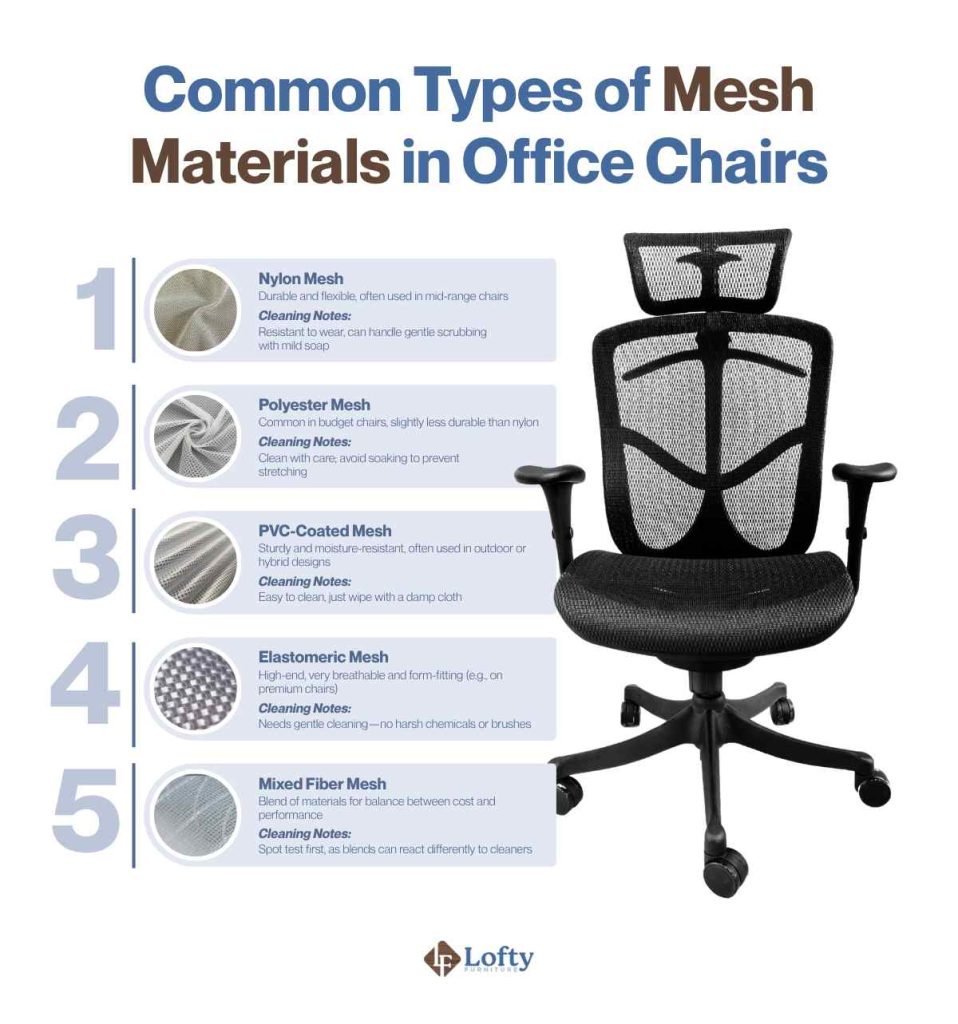
Now, why should you clean your mesh chair?
Cleanliness is a matter of hygiene. Studies have revealed that office desks and chairs can host millions of bacteria per square inch—more than a toilet seat in some cases. Beyond health concerns, a clean chair contributes to a better mental workspace. A tidy environment signals order, which can influence how focused and comfortable you feel throughout the day. In fact, 94% of employees say they feel more productive in a clean workspace. So whether you’re working from home or simply want to take better care of your furniture, giving your mesh chair the attention it deserves can pay off in both wellness and workflow.
Step-by-Step Guide on How to Clean a Mesh Chair at Home
Cleaning your mesh chair doesn’t have to be a complicated task—just a bit of care and attention can restore its comfort and appearance.
Essential Supplies You’ll Need
Using the right tools not only makes the job easier but also helps prevent accidental damage to the material. Here’s a quick list of essential supplies you’ll want to have on hand:
- Vacuum cleaner with a brush attachment
- Soft-bristled brush or an old toothbrush
- Microfiber cloths
- Mild dish soap or a fabric-safe cleaner
- Warm water
- Spray bottle (optional)
- Disinfectant wipes or spray
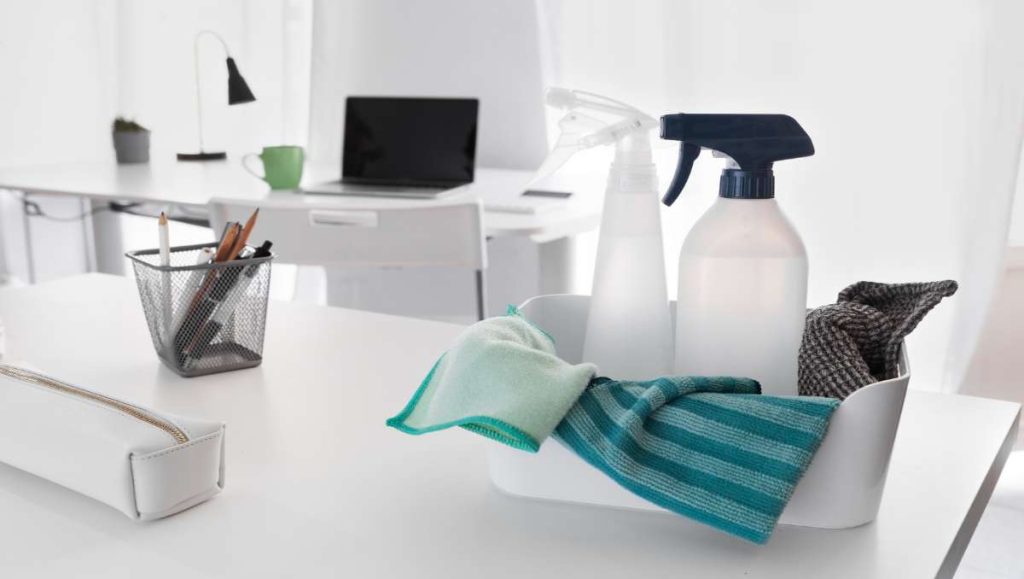
Step 1: Initial Dust & Debris Removal (Vacuuming)
Start by vacuuming your chair to remove loose dust, crumbs, and debris. Use a vacuum cleaner with a brush or upholstery attachment and run it gently across the mesh, seat, and frame. Be sure to reach into crevices and seams where dirt tends to accumulate.
Step 2: General Surface Cleaning (Mild Soap & Water)
Mix a few drops of mild dish soap with warm water, then dip a microfiber cloth into the solution and wring it out well. Gently wipe down the mesh areas, armrests, and frame. Avoid soaking the fabric—lightly damp is enough. This step removes surface dirt and oils.
Step 3: Tackling Stubborn Stains (Spot Cleaning)
For spots or stains that didn’t come out with general cleaning, apply a bit of the soapy solution directly onto the stain using a soft-bristled brush or toothbrush. Work it in with circular motions, then blot with a clean damp cloth to lift the residue. Repeat if needed, but always test any cleaning product in an inconspicuous area first to avoid discoloration.
For spills like coffee or ink, Deepak Shukla, CEO of Pearl Lemon Cleaning, offers a great tip:
“Blot, don’t rub, and then isopropyl alcohol (70% is fine) on a cotton swab. It lifts ink while not wrecking the fabric. The best solution for food stains is a mixture of dish soap and baking soda paste; apply the paste, let it sit for 15 minutes, and then gently brush it off.”
Step 4: Deep Cleaning & Disinfection (Optional, but Recommended)
If your chair has gone a while without a thorough clean or if you’re recovering from illness, it’s a good idea to disinfect. Use a steam cleaner or a fabric-safe disinfectant spray or wipes on the mesh and hard surfaces. Make sure the product is appropriate for your chair’s materials. For a deeper clean that won’t damage your mesh, Deepak Shukla advises:
“Use lukewarm water, a small amount of mild detergent, and white vinegar (about a 1:1:0.5 ratio) to thoroughly clean a mesh chair without making it look like a frayed skeleton. Grab a silicone basting brush. No joke. It fits in the weave of the mesh and won’t snag the weave. Wipe down with the microfiber cloth after performance and then let it air dry.”
Step 5: Cleaning the Wheels/Casters and Base
Flip the chair carefully to access the wheels. Use a vacuum or dry brush to remove hair and debris caught in the casters. If the wheels are sticky or clogged, you can remove them for a deeper clean—soak in warm soapy water, scrub, rinse, and dry before reattaching.
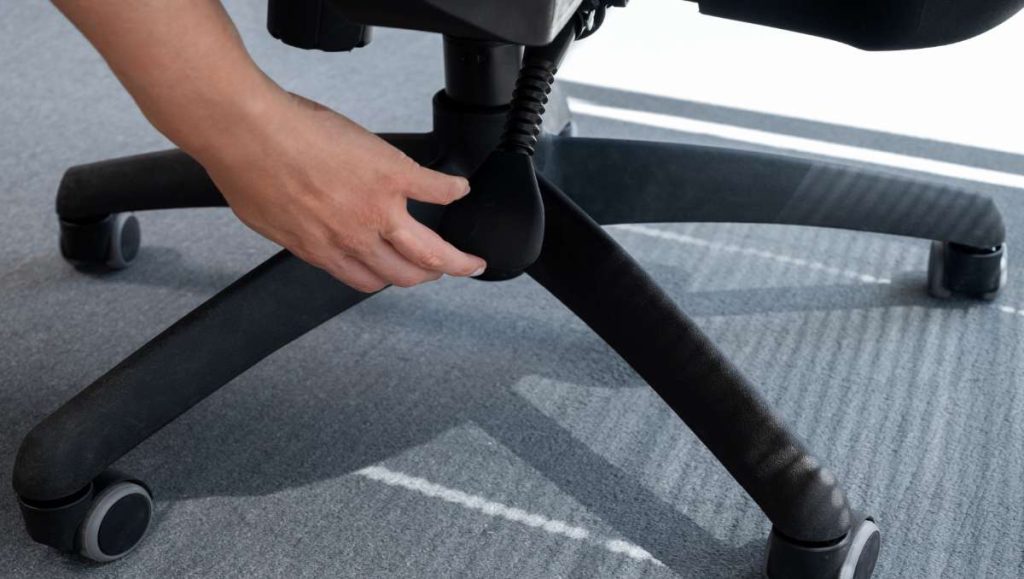
Step 6: Drying Your Mesh Chair
Once cleaning is done, let the chair air dry completely before using it again. Place it in a well-ventilated area—preferably near a fan or open window—to speed up the drying process. Avoid sitting on or covering the chair until the mesh is fully dry to prevent mildew or warping. Deepak also leaves this great tip for tackling lingering odors:
“Odors are the silent assassins. Charcoal is the trick, not Febreze. Wrap activated charcoal in a breathable pouch and wedge it under the seat for 24-48 hours. Or, if you’re like me and your dog Spritz has claimed your chair as his throne, enzyme sprays made for pet odors work beautifully on human funk too.”
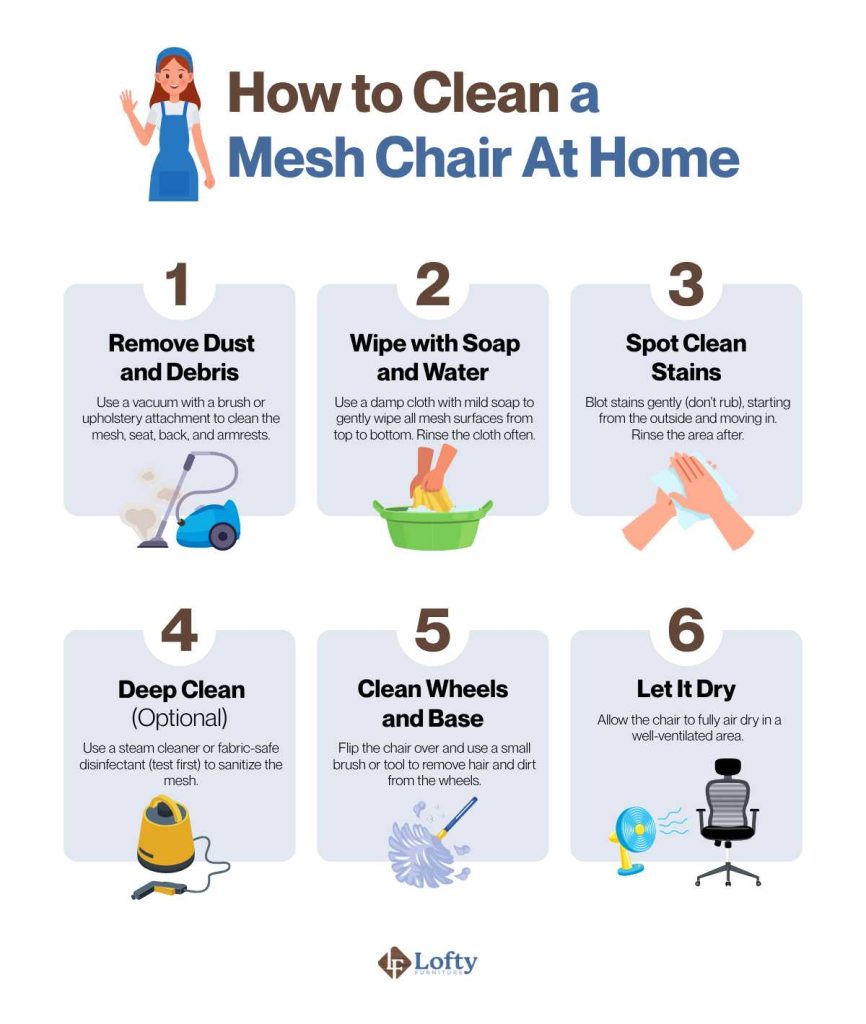
Common Mesh Chair Cleaning Mistakes to Avoid
When it comes to cleaning your mesh chair, knowing what not to do is just as important as knowing what to do.
- Using Harsh Chemicals or Bleach: Always opt for mild, pH-neutral cleaners.
- Over-Saturating the Mesh: Excess moisture can seep into the chair’s internal components, promoting mold and mildew growth.
- Vigorously Rubbing Stains: Rubbing aggressively can spread the stain, push dirt deeper into the fibers, fray the mesh, or even distort its weave.
- Not Testing Cleaners in an Inconspicuous Area: This is a golden rule for any cleaning project. Always test it on a hidden spot (like the underside of the seat or backrest).
- Not Cleaning Regularly (or waiting until it’s “too dirty”): Old stains are harder to remove, and accumulated debris can degrade the mesh more rapidly.
- Using Abrasive Scrubbers or Brushes: Steel wool, stiff-bristled brushes, or abrasive sponges can snag, scratch, or tear the delicate mesh fabric.
- Leaving the Chair Damp: Ensure the chair is thoroughly air-dried in a well-ventilated area before use. Avoid direct sunlight, as this can cause fading.
How To Maintain Your Mesh Chair for Long-Term Durability
Keeping your mesh chair in good condition involves regular maintenance. Make a habit of vacuuming or wiping down the mesh every couple of weeks to prevent dust buildup. Be mindful of weight limits and avoid leaning too far back or using the armrests for pushing yourself up, as this can stress the frame and fabric over time. Check the wheels and screws every few months, tightening or cleaning them as needed to ensure smooth movement and stability. If you notice any sagging in the mesh, avoid using it until it’s inspected or repaired to prevent further damage. Additionally, try to keep the chair out of direct sunlight for long periods, as UV exposure can fade and weaken the material.
How often should you clean your mesh chair? Follow this schedule to maintain hygiene, extend lifespan, and keep your mesh chair looking fresh.
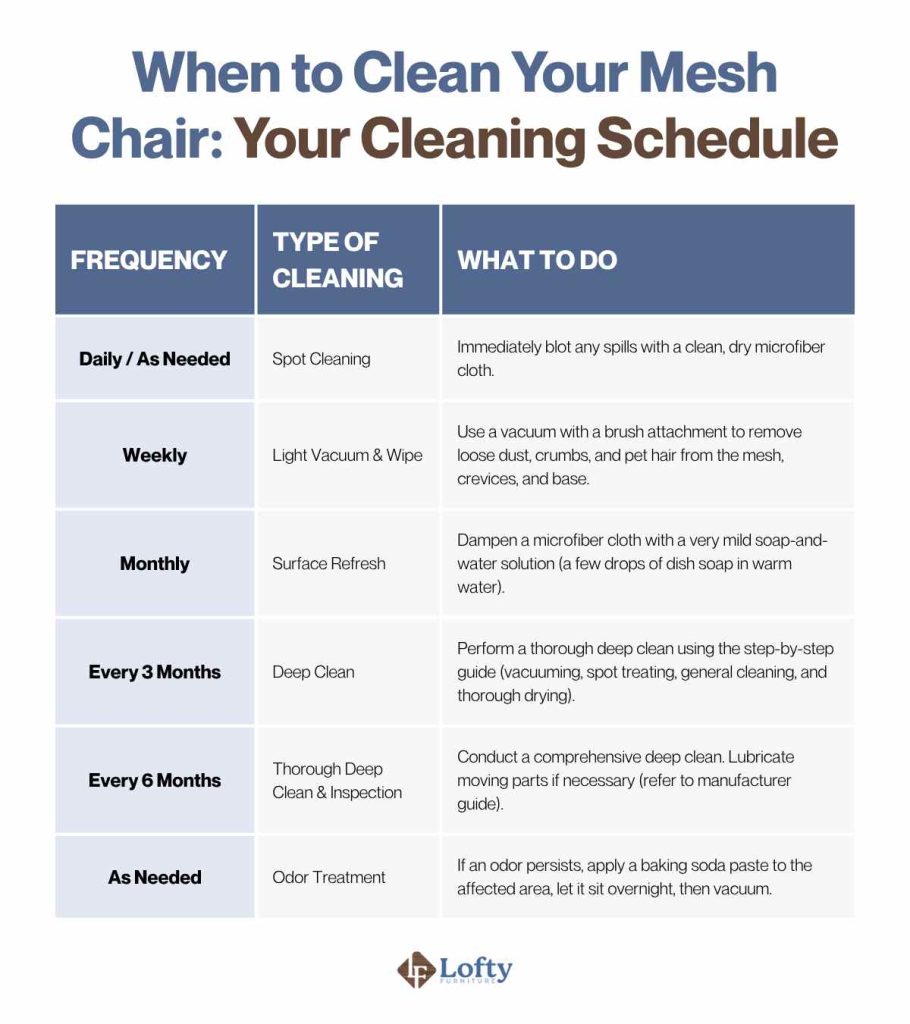
Even with regular care, some issues go beyond DIY fixes. If your chair has deep stains, persistent odors, sagging mesh, or broken parts, it may be time to bring in a professional—or invest in a replacement if the damage impacts comfort or safety.
If you’re ready to upgrade to a chair that supports you and is easy to maintain, explore our 400lbs ergonomic mesh chair today!
Final Thoughts on Keeping Your Mesh Chair Clean
Taking care of your mesh chair doesn’t have to be complicated—just consistent. With regular maintenance and a few simple cleaning steps, you can keep your chair looking fresh, feeling comfortable, and functioning properly for years. And when needed, knowing when to call in professionals or let go of a chair that’s beyond saving can help you make smart, long-term choices. A little care really does go a long way. Your back, your productivity, and even your air quality will thank you for it.
Frequently Asked Questions
Can I use a washing machine to clean the mesh fabric?
No, mesh chair fabric is typically fixed to the frame and not designed to be removed or machine-washed. Attempting to do so will stretch, fray, or permanently damage the material.
What’s the best way to remove stubborn coffee stains from the mesh?
Mix a small amount of dish soap with warm water and apply it to the stain using a soft cloth or brush. For more stubborn spots, add a drop of white vinegar to the mix, but always spot test first to avoid discoloration.
How to remove smell from mesh chair?
To remove odors from a mesh chair, sprinkle baking soda generously over the seat, backrest, and any other areas where smells tend to linger. Let it sit for several hours or overnight, then vacuum it off to help neutralize any lingering odors.
How do you get period stains out of a mesh chair?
To remove period stains from a mesh chair, dampen a cloth with cold water and add a small amount of mild soap. Gently blot the stain—don’t rub—until it lifts. For tougher stains, you can try a bit of white vinegar or hydrogen peroxide, but test it on a small area first to avoid damage.
